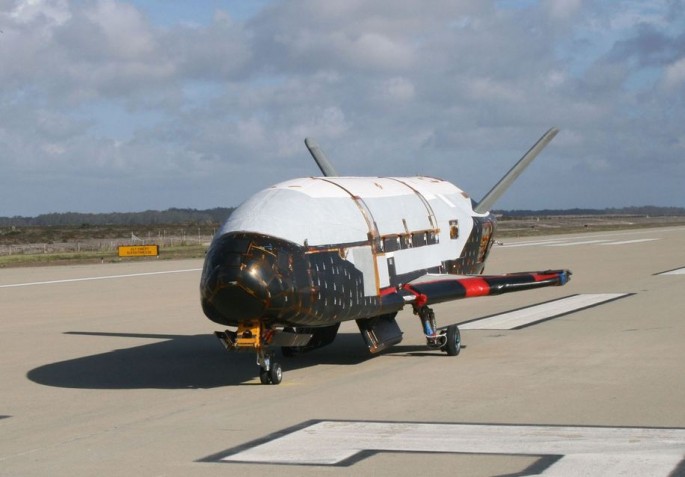The secret Boeing X-37B military space plane in low Earth orbit (LEO) has been circling the Earth for over 500 days instead of the 200 days announced by the U.S. Air Force and military analysts are wondering why.
The current mission for this hush-hush spacecraft that looks like a mini-Space Shuttle was launched on May 20, 2015. This mission was identified as USA-261 and is the fourth secret X-37B mission since 2011.
At the time USA-261 was launched, the Air Force issued a statement saying the mission will last for only 200 days and won't break the 674 day space endurance record of USA-240 set in 2014.
That mission, the third, was designated USA-240 and lasted from December 2012 to October 2014. It set the record for the longest mission by a reusable space vehicle: 674 days. The true purpose of this flight remains unknown as most X-37B payloads are classified in nature.
USA-261 is set to break this record in six months and the only ones who know for certain if it can do this is the Air Force and they aren't talking.
What the public knows is that USA-261 has tested a Hall Effect thruster in support of the Air Force's Advanced Extremely High Frequency (AEHF) communications satellite program. The on-orbit test plans for the experiment are being developed by Air Force Research Laboratory and administered by the Rapid Capabilities Office that runs the X-37B program.
The experiment includes collection of telemetry from the Hall thruster operating in the space environment as well as measurement of the thrust imparted on the vehicle. Also aboard USA-261 is NASA's METIS (Materials Exposure and Technology Innovation in Space) experiment to expose nearly 100 different materials samples to the space environment for more than 200 days.
METIS is based on MISSE (Materials on International Space Station Experiment), which flew more than 4,000 samples in space from 2001 to 2013. It includes a variety of materials including polymers, composites and coatings.
The X-37B is also known as the Orbital Test Vehicle (OTV) and there are two flyable prototypes of the OTV.
In 2014, however, media speculated the X-37B is testing reconnaissance and spy sensors to determine how far they can withstand radiation and other LEO dangers. Another report claimed the X-37B might be a spy satellite or a "space bomber" that can launch weapons from space at ground targets. The Pentagon has denied this space bomber claim.



























